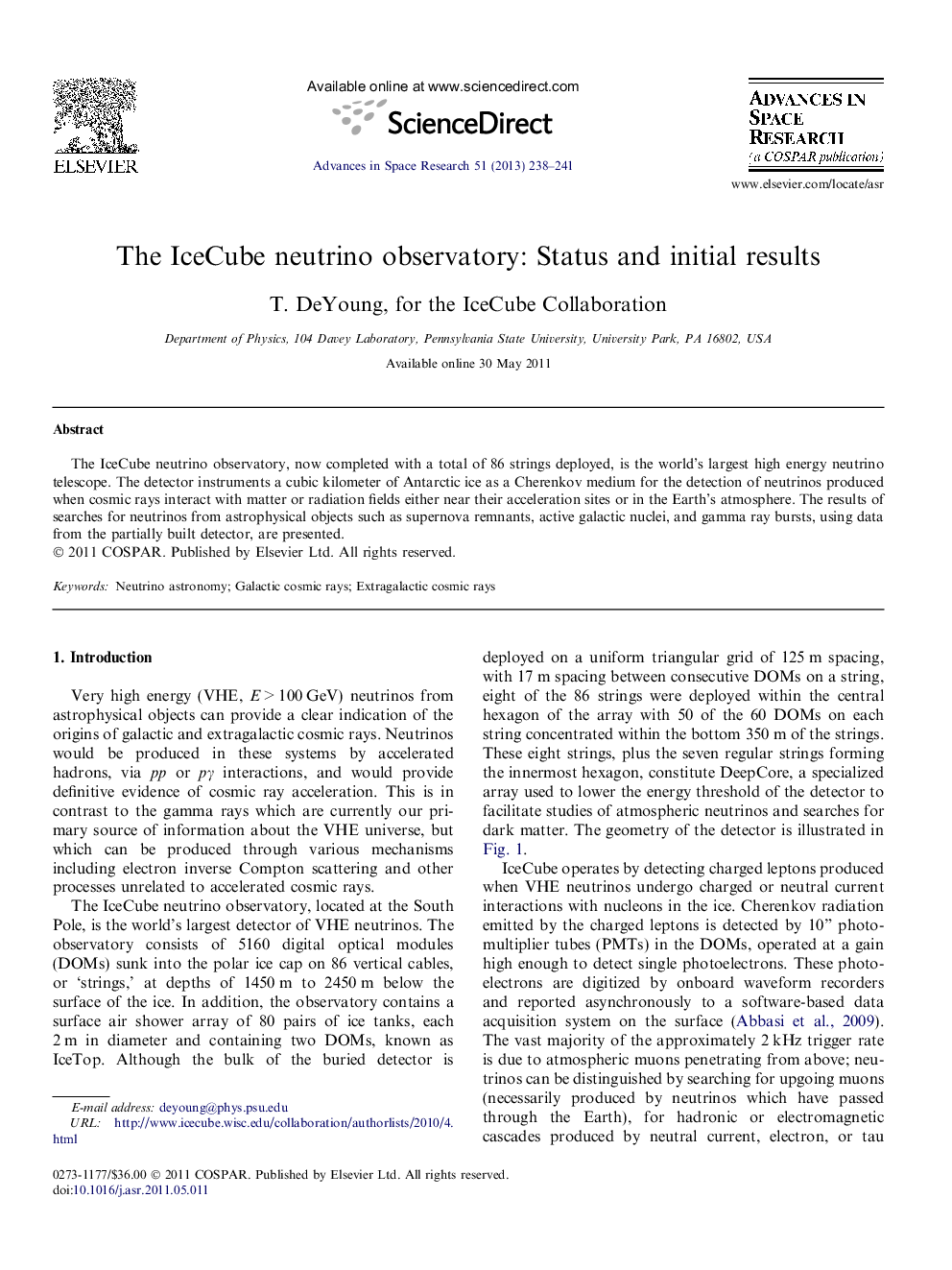| Article ID | Journal | Published Year | Pages | File Type |
|---|---|---|---|---|
| 1764553 | Advances in Space Research | 2013 | 4 Pages |
Abstract
The IceCube neutrino observatory, now completed with a total of 86 strings deployed, is the world’s largest high energy neutrino telescope. The detector instruments a cubic kilometer of Antarctic ice as a Cherenkov medium for the detection of neutrinos produced when cosmic rays interact with matter or radiation fields either near their acceleration sites or in the Earth’s atmosphere. The results of searches for neutrinos from astrophysical objects such as supernova remnants, active galactic nuclei, and gamma ray bursts, using data from the partially built detector, are presented.
Related Topics
Physical Sciences and Engineering
Earth and Planetary Sciences
Space and Planetary Science
Authors
T. DeYoung,
